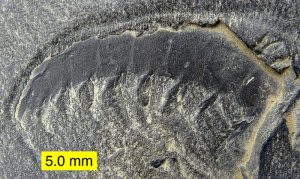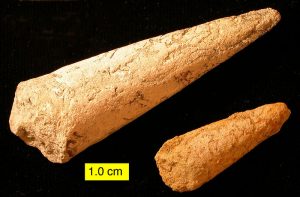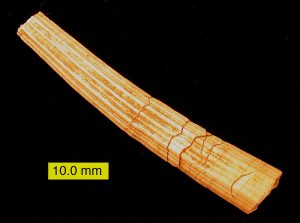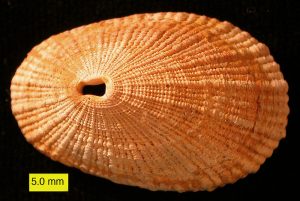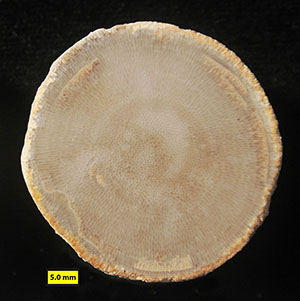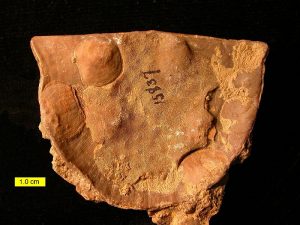The last week! Good luck finishing your research papers (due 12/7, 7:30 a.m., Dropbox) and getting ready for next week’s final examination (12/11, 7-10 p.m.). Now, on to our last topics:
Graptolites are disparate, fussy, and a bit strange, but they have significant biostratigraphic value. Our graptolite specimens for the most part look like little black hacksaw blades painted on black shale, so you may appreciate the better images on the Web. The Wikipedia graptolite article is short but informative. An amateur collector has put together a good presentation of Ordovician graptolites from the Athens Shale of Alabama.
Here are some useful links for the annelid worms. The group that we cover systematically is the Family Serpulidae of the Class Polychaeta. You’ve seen twisty white serpulid worm tubes for awhile in the laboratory. They encrust virtually any marine hard substrate, from rocks to corals to boat hulls.
The Class Tentaculita is incertae sedis, meaning it has “uncertain placement” in life’s catalog. We think they are related to the brachiopods and bryozoans (as lophophorates), but their systematic position is still debated. In this course you will be working with the cornulitids, tentaculitids and microconchids. (The latter are close to my heart!)
Let’s start with the Wikipedia page for trace fossils. Wooster has an excellent collection of hardgrounds, especially from the calcite seas of the Ordovician and Jurassic, on which we will see many borings. We also have a good soft-sediment trace fossil set, much of it inherited from the late Professor Richard G. Osgood, Jr.
Final Lab & Lecture Exam: December 11 (Monday), 7:00 – 10:00 p.m.
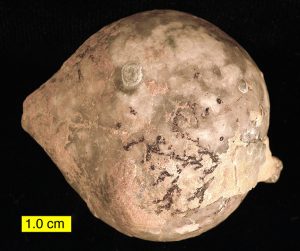
Encrusting graptolite (Thallograptus sphaericola) on the rhombiferan cystoid Echinosphaerites aurantium (Middle Ordovician, northeastern Estonia).
Geology in the News –
Here’s a great article on the eyes of scallops. They are much more sophisticated than I thought.
Another amazing paleontological discover in China: Hundreds of pterosaur eggs, including embryos. What we know about pterosaur biology has just increased an order of magnitude. From the abstract: “Fossil eggs and embryos that provide unique information about the reproduction and early growth of vertebrates are exceedingly rare, particularly for pterosaurs. Here we report on hundreds of three-dimensional (3D) eggs of the species Hamipterus tianshanensis from a Lower Cretaceous site in China, 16 of which contain embryonic remains.”
A new bird species is appearing in the Galapagos, and it is a hybrid. “In the past, it was thought that two different species must be unable to produce fertile offspring in order to be defined as such. But in more recent years, it has been established that many birds and other animals that we consider to be unique species are in fact able to interbreed with others to produce fertile young.” The Species Concept is in considerable flux right now.
What distinguishes humans from the other great apes? The brain, my friends, the brain. Tiny genetic changes made for massive differences in brain form and function. They’ll never catch up to us.
It’s not often we get a new genus of fossil vertebrate, especially among Pleistocene horses. Meet Haringtonhippus from Ice Age North America.

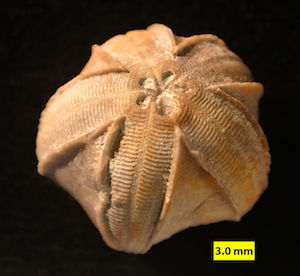
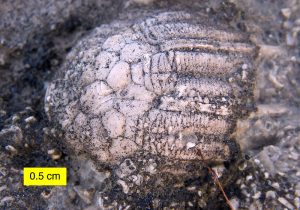
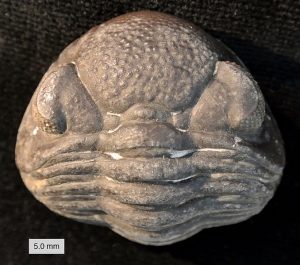 Geology in the News –
Geology in the News –